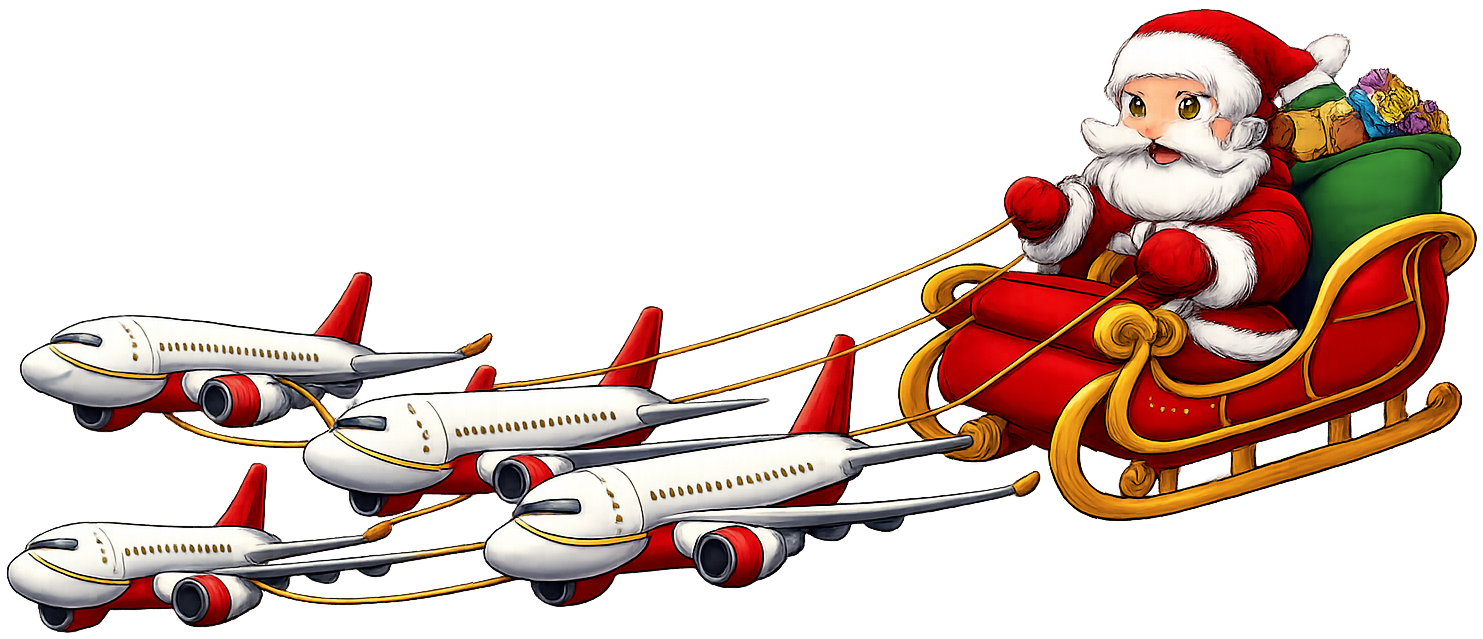Introduction to Customs Clearance
Customs Clearance is the set of administrative procedures required to allow goods to legally enter or exit a customs territory. In the context of air freight, customs clearance is a crucial step that determines whether goods can be imported or exported and what duties and taxes must be paid.
Customs clearance typically involves:
- Submitting documents and declarations to customs authorities
- Verifying the compliance of goods with local regulations
- Calculating and paying applicable customs duties and taxes
- Obtaining authorization for the release of goods
This procedure is essential to ensure that transported goods comply with the importing country's laws and regulations, while allowing governments to collect appropriate tax revenues and protect their national economy.
Key Players in Customs Clearance
Customs Authorities
Customs authorities are government agencies responsible for controlling the flow of goods across borders. Their main responsibilities include:
- Enforcing customs laws and regulations
- Collecting duties and taxes on imports
- Preventing the entry of illegal or dangerous goods
- Protecting intellectual property and combating counterfeiting
- Collecting statistics on international trade
Examples of customs authorities:
- France: Direction Générale des Douanes et Droits Indirects (DGDDI)
- European Union: EU Customs
- United States: U.S. Customs and Border Protection (CBP)
- China: General Administration of Customs (GACC)
Customs Declarant
The customs declarant is the individual or entity that submits the customs declaration on their own behalf or on behalf of a third party. This can be:
- The importer or exporter themselves
- A customs broker acting as a representative
- A freight forwarder with the necessary skills and authorizations
The customs declarant is legally responsible for the accuracy of the information provided in the declaration and the payment of duties and taxes.
Customs Broker
The customs broker is a specialized professional, authorized by customs authorities, who represents importers and exporters in their customs procedures. Their main functions are:
- Preparing and submitting customs declarations
- Advising on the tariff classification of goods
- Calculating applicable duties and taxes
- Obtaining necessary licenses and permits
- Representing the client during customs inspections
In France and the European Union, customs brokers are now called Registered Customs Representatives (RCR).
Direct vs. Indirect Representation
In the European Union, there are two types of customs representation:
- Direct Representation: The broker acts on behalf of and in the name of the client. The customs responsibility primarily lies with the client.
- Indirect Representation: The broker acts in their own name but on behalf of the client. The customs responsibility is shared between the broker and the client.
The choice between these two modes of representation depends on several factors, including the level of risk each party is willing to assume.
Documents Required for Customs Clearance
Customs clearance requires the preparation and submission of several essential documents:
Basic Documents
- Customs Declaration: Official document by which the importer or their representative indicates the applicable customs procedure and provides the necessary information for the application of duties and taxes.
- In the EU: Single Administrative Document (SAD) or electronic declaration via the DELTA system
- In the United States: CBP Form 7501 (Entry Summary)
- Commercial Invoice: Document issued by the seller indicating the details of the transaction, including:
- Identity of the seller and buyer
- Precise description of the goods
- Quantity and unit price
- Delivery terms (Incoterm)
- Payment terms
- Packing List: Document detailing the contents of each package, with:
- Number of packages
- Contents of each package
- Dimensions and weight
- Marking and numbering
- Transport Document: Proof of the transport contract
- For air freight: Air Waybill (AWB)
Additional Documents Depending on the Case
- Certificate of Origin: Document attesting to the origin of the goods, often required to benefit from preferential tariffs under trade agreements
- Non-preferential Certificate of Origin: issued by Chambers of Commerce
- Preferential Certificate of Origin: EUR.1, EUR-MED, Declaration on Invoice, etc.
- Import/Export License: Government authorization required for certain categories of products
- Sanitary or Phytosanitary Certificate: For food products, plants, and animal-derived products
- Certificate of Conformity: Attesting that the products comply with the technical or safety standards of the importing country
- ATA Carnet: For the temporary admission of goods (exhibitions, professional samples, etc.)
- Transit Document: For goods passing through a territory without being definitively imported (T1, T2, etc.)
Dematerialization of Customs Documents
More and more countries are adopting electronic customs clearance systems that allow for the dematerialized submission of documents. These systems, such as the National Single Window (NSW) in France or the Automated Commercial Environment (ACE) in the United States, aim to simplify and accelerate customs procedures while reducing errors and fraud.
Steps in the Customs Clearance Process
The customs clearance process for air freight generally follows these steps:
1. Preparation Before Arrival
- Advance Data Transmission: Many countries require the electronic transmission of freight information before the aircraft's arrival (e.g., the ICS system in the EU or the Air Cargo Advance Screening in the United States)
- Pre-Clearance: In some cases, it is possible to begin customs formalities before the physical arrival of the goods
- Risk Analysis: Customs authorities analyze the received information to identify high-risk shipments requiring in-depth control
2. Arrival and Notification
- Arrival Notification: The cargo terminal operator notifies customs authorities of the arrival of the goods
- Temporary Storage: Goods are placed in a customs-controlled area awaiting clearance
3. Customs Declaration
- Declaration Preparation: The declarant prepares the customs declaration with all required information
- Tariff Classification: Assignment of the correct customs code according to the Harmonized System (HS) or local tariff nomenclature
- Determination of Customs Value: Calculation of the value that will serve as the basis for the application of duties and taxes
- Declaration Submission: Electronic transmission or physical submission of the declaration and supporting documents
4. Customs Control
Based on the risk analysis, customs authorities may decide on different levels of control:
- Green Channel: Immediate release without control
- Orange Channel: Documentary control (verification of documents without physical inspection)
- Red Channel: Physical control (inspection of goods)
- Blue Channel: Immediate release with post-clearance control
5. Payment of Duties and Taxes
- Calculation of Duties and Taxes: Determination of amounts to be paid based on tariff classification, origin, and value of goods
- Payment: Settlement of amounts due, either directly or via a customs credit account
- Deferred Payment: In some cases, possibility of deferring payment (simplified procedures, guarantees, etc.)
6. Release and Delivery
- Release: Authorization for the release of goods by customs authorities
- Delivery: Goods are handed over to the importer or their representative
Summary of Key Points
Customs clearance is a crucial step in air cargo transport, involving several actors and documents. Here are the key points to remember:
- Customs clearance is necessary for the legal entry or exit of goods from a customs territory.
- The main actors are customs authorities, the customs declarant, and the customs broker.
- Required documents include the customs declaration, commercial invoice, packing list, and other specific documents depending on the case.
- The customs clearance process includes preparation, declaration, customs control, payment of duties and taxes, and release.
Practical Tips for Air Freight Professionals
Thorough Preparation
Ensure that all necessary documents are prepared correctly and submitted on time to avoid delays.
Collaboration with Customs Authorities
Maintain open communication with customs authorities to facilitate the customs clearance process.
Use of Digital Tools
Adopt electronic customs clearance systems to simplify and accelerate customs procedures.
Continuous Training
Stay informed about regulations and best practices in customs clearance. Continuous training is essential to adapt to changes in the sector.
Risk Management
Implement procedures to manage potential risks, such as delays or customs inspections.
Conclusion
Customs clearance is a complex but essential step in air cargo transport. By understanding the procedures and adopting best practices, professionals can optimize their operations and ensure regulatory compliance. Collaboration with customs authorities and the use of modern digital tools are key elements for success in this field.




